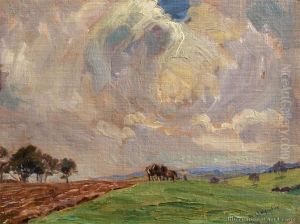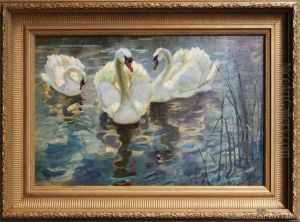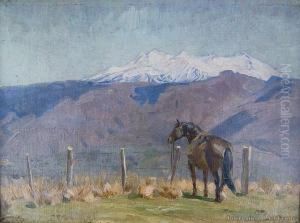Beatrix Charlotte Dobie Paintings
Beatrix Charlotte Dobie, known as Béatrix Dobie, was a New Zealand artist born on October 31, 1887, in Hawera, Taranaki. She was the daughter of Henry Govett, a surveyor and draughtsman, and her mother was Edith Kate Richmond. Beatrix was part of a prominent family in New Zealand; her great-uncle, James Crowe Richmond, and her grandfather, Henry Robert Richmond, were both influential figures in the colony. The Richmond-Atkinson family included several artists and individuals involved in public affairs, which provided a rich cultural environment for Beatrix to grow up in.
Beatrix Dobie's artistic talent became evident early in her life. She received her initial art education in New Zealand but moved to England for further studies. In England, she attended the Slade School of Fine Art, which was one of the most progressive art schools at the time, known for its encouragement of women artists. After completing her studies at the Slade, Dobie traveled to France, where she lived for many years. She was significantly influenced by French art and culture, and this is reflected in her work.
Dobie is particularly known for her works in watercolor and her skillful botanical illustrations. Her oeuvre includes landscapes, portraits, and still lifes. She exhibited her work in various venues, including the Paris Salon, the Royal Academy of Arts in London, and the New Zealand Academy of Fine Arts. Beatrix Dobie's works are characterized by their vibrant color palette and her ability to capture the essence of her subjects with a delicate yet precise touch.
Despite her talent and the recognition she received during her lifetime, Beatrix Dobie's career was somewhat overshadowed by the achievements of other members of her extended family, and she did not achieve the same level of fame as some of her contemporaries. Nonetheless, her contributions to New Zealand's art history are significant, and her works are held in several collections, both in New Zealand and abroad.
Beatrix Charlotte Dobie's life was tragically cut short during the Second World War. She died on December 28, 1943, at the age of 56, in the French town of Fréjus, as a result of an accident during an Allied bombardment. Her untimely death was a loss to the New Zealand art community, as she was in the midst of a productive period in her career. Today, she is remembered as a talented artist who bridged the artistic traditions of New Zealand and Europe, and her works continue to be appreciated by art lovers and collectors.



